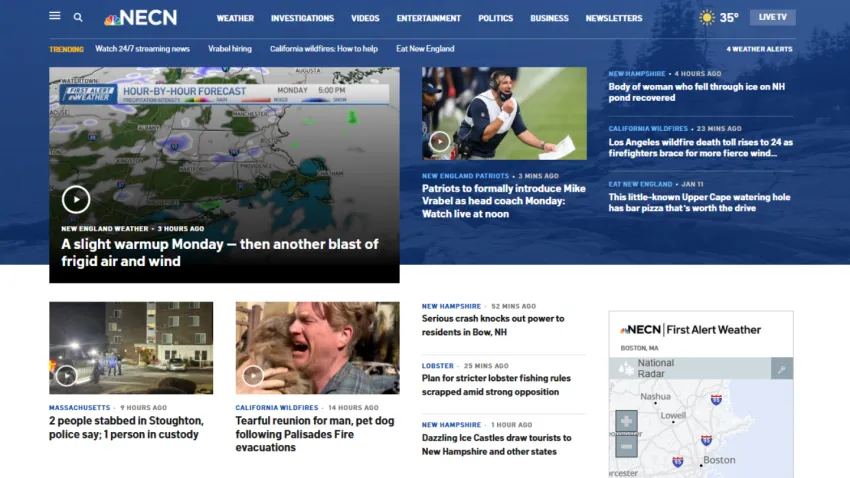

The Latest
-

Jaylen has jokes for Porzingis after big man's nasty cut on nose
Jaylen Brown couldn’t resist having fun at Kristaps Porzingis’ expense after his Celtics teammate took a shot to the nose Friday against the Suns.
-

‘The cost is lives': Democrats push back against federal cuts
Concern is growing for many across Massachusetts as federal cuts from the Department of Government Efficiency remain front and center. Democrats warn that Medicaid is in the crosshairs, along with the Boston office of the Low-Income Home Energy Assistance Program. “The cost is lives,” said Rep. Seth Moulton, D-Massachusetts. “The ... -

Red Sox put new ‘Wally' HR celebration to use in 13-run home opener
The Red Sox unveiled their new home run celebration in emphatic fashion during a 13-run explosion in their 2025 home opener.
-

3 seriously injured in Springfield shooting
A shooting in Springfield, Massachusetts, left two men and a woman with serious injuries, police said
-

Celtics-Suns recap: C's make NBA history in dominant 123-103 win
The Celtics got back in the win column in resounding fashion Friday with a 20-point win over the Suns. Check out our full game recap and analysis.
-

Needham High School band director charged with child pornography possession, superintendent says
The charges against Spencer Parrish were announced Friday by school officials in Needham, Massachusetts
-

Man facing manslaughter, OUI charges in deadly Cape Cod crash
A man is facing manslaughter and drunken driving charges in a head-on crash that killed another driver on Cape Cod Thursday, officials said.
-

Mass. court issues ‘bombshell' ruling on tech founder's stock sale
In what one tax expert called a “bombshell” decision, a state appeals court ruled this week that a tech founder’s sale of his interests in his company could be taxed as Massachusetts income, even though he no longer lived in Massachusetts at the time of the sale.
-

Patriots defense looking to be defined by its ‘unwavering violence'
The Patriots’ new defensive coaches have a clear vision for how they want their unit to play this season, writes Phil Perry.
-

This gorgeous spring weather won't last — a soggy weekend's on the way
If you love spring, enjoy Friday! Big changes arrive for the weekend with rain and cooler temperatures.
-

Trump administration issues demands on Harvard to save its $9B in federal funding
Harvard president Alan Garber said in response the school had “devoted considerable effort to addressing antisemitism” and would provide a full accounting to the government.
-

Stevens details how Tatum and Brown's growth has reached a new level
In an exclusive interview with Chris Forsberg, Brad Stevens explains how Jayson Tatum and Jaylen Brown have elevated their game to new heights.
-

Bedard: Milton trade is ‘more evidence' that Vrabel is in charge
The Patriots trading Joe Milton for relatively little value is a sign that Mike Vrabel is calling the shots in New England, says Greg Bedard.









